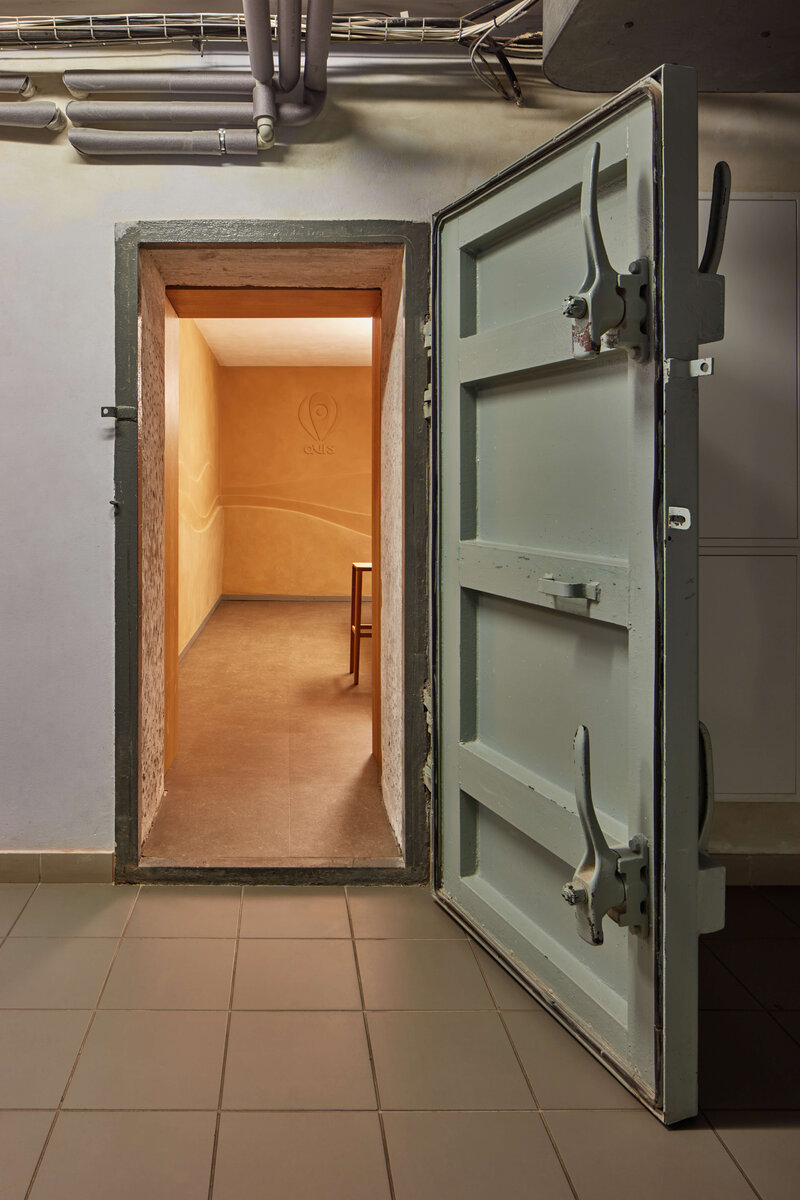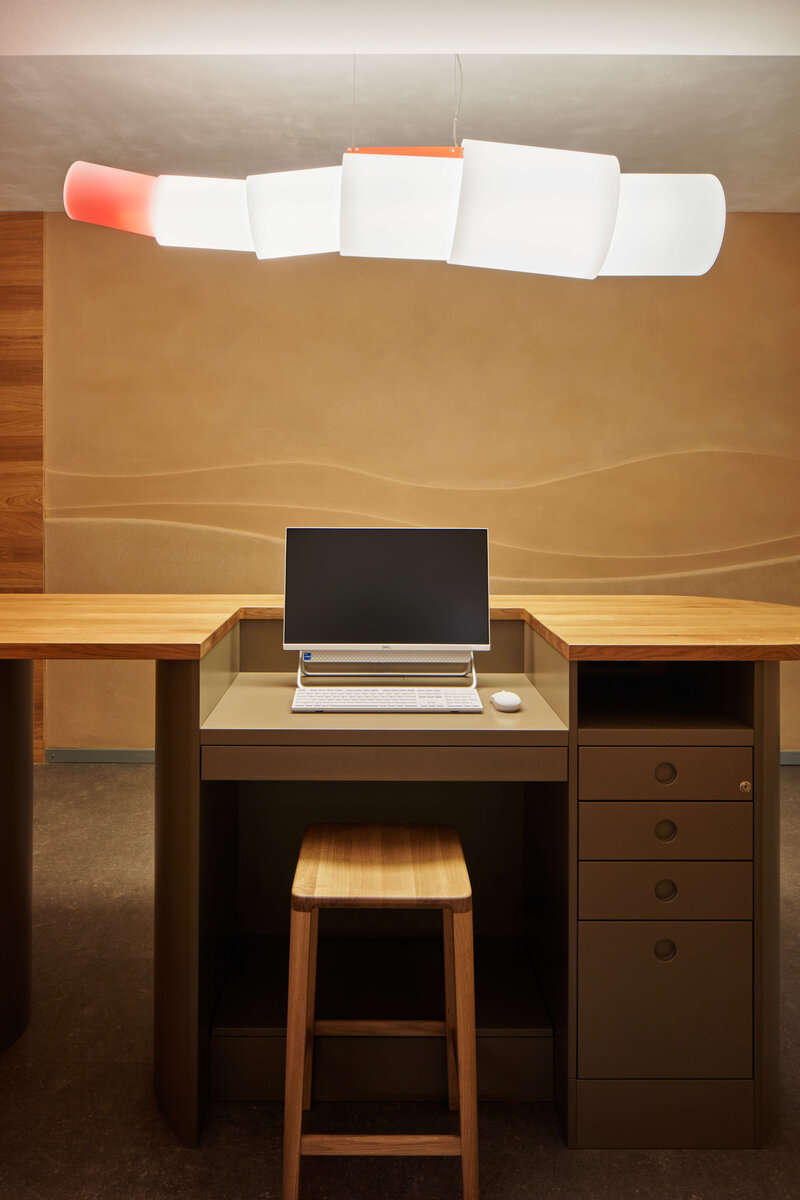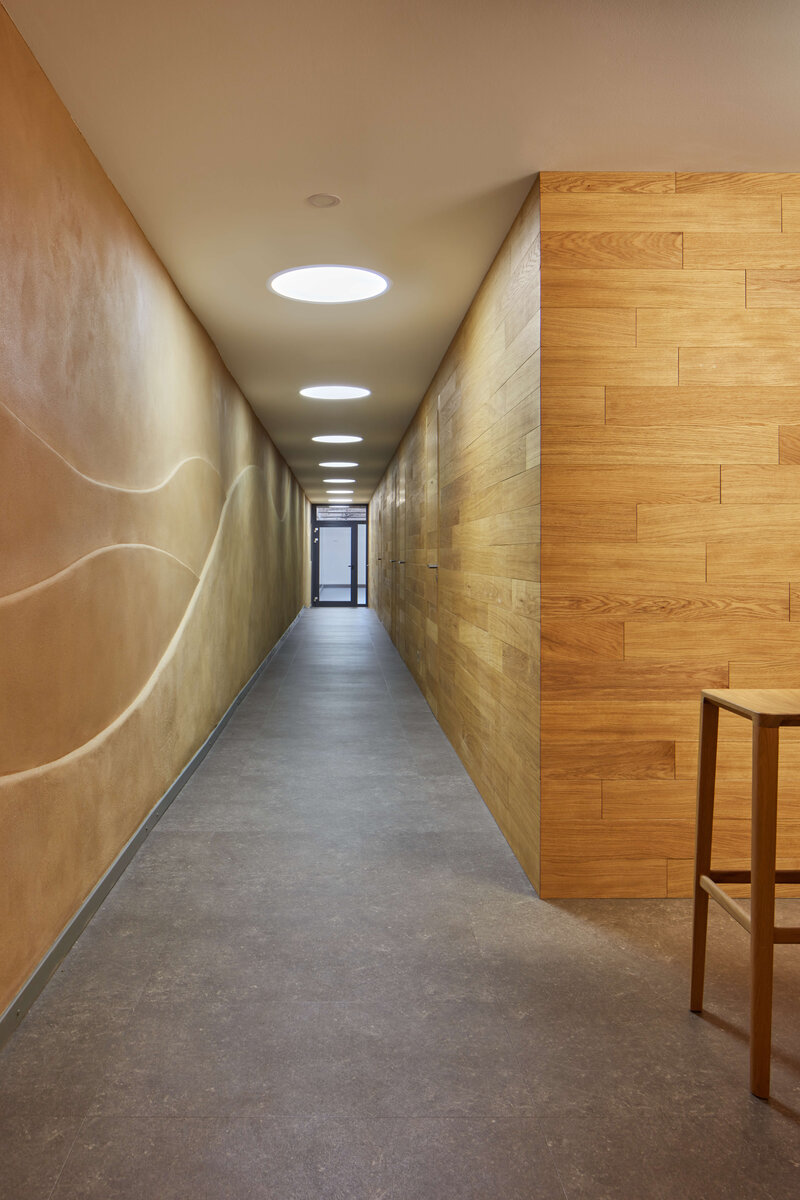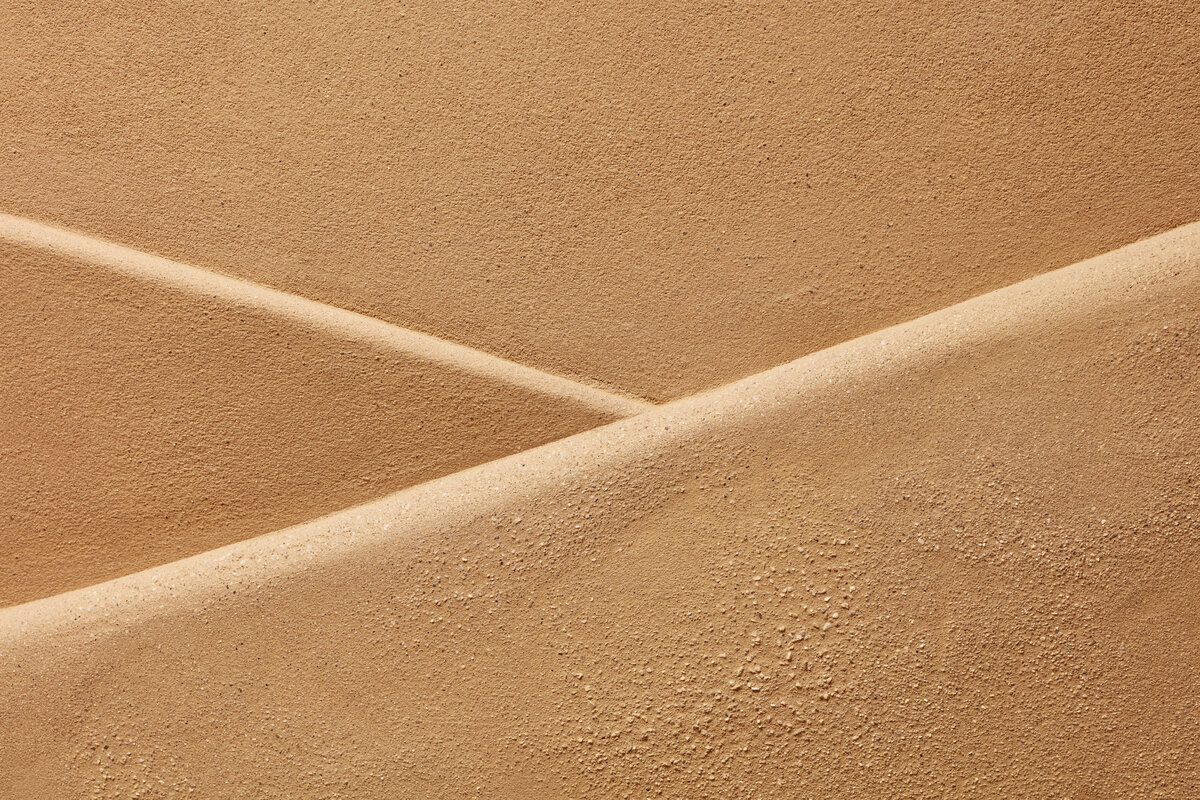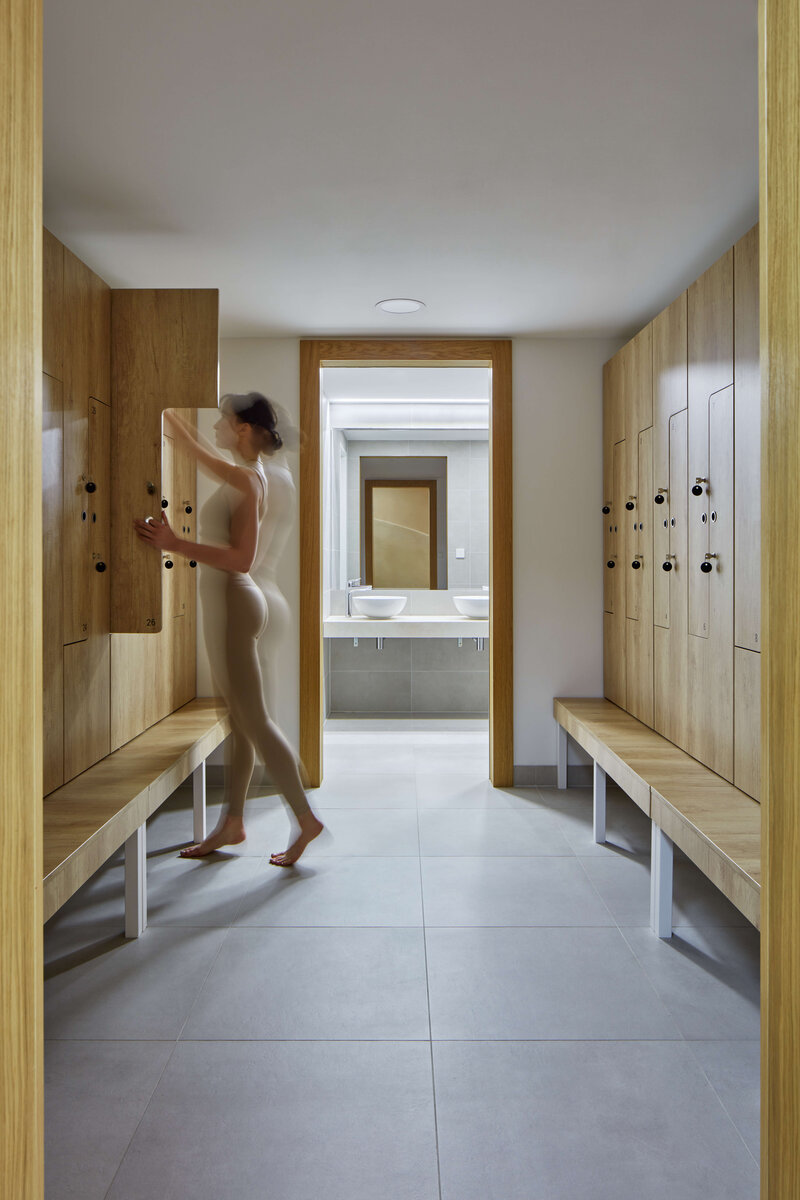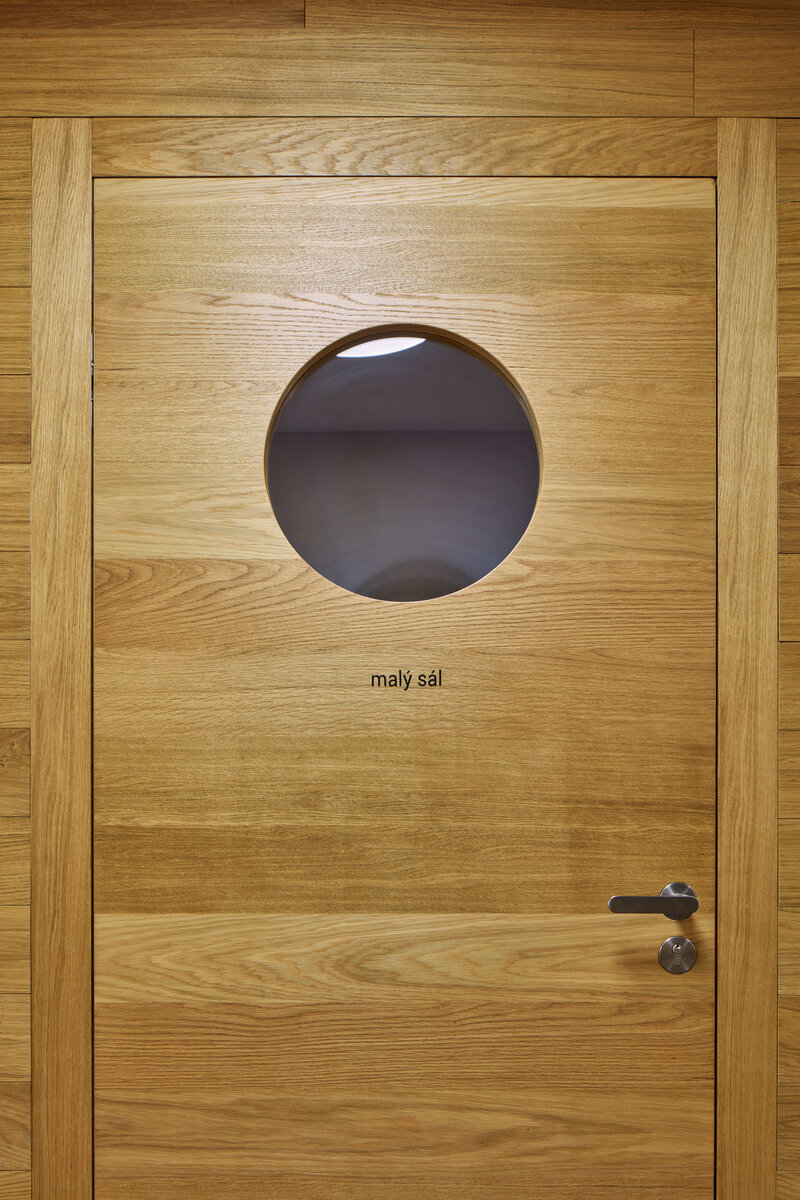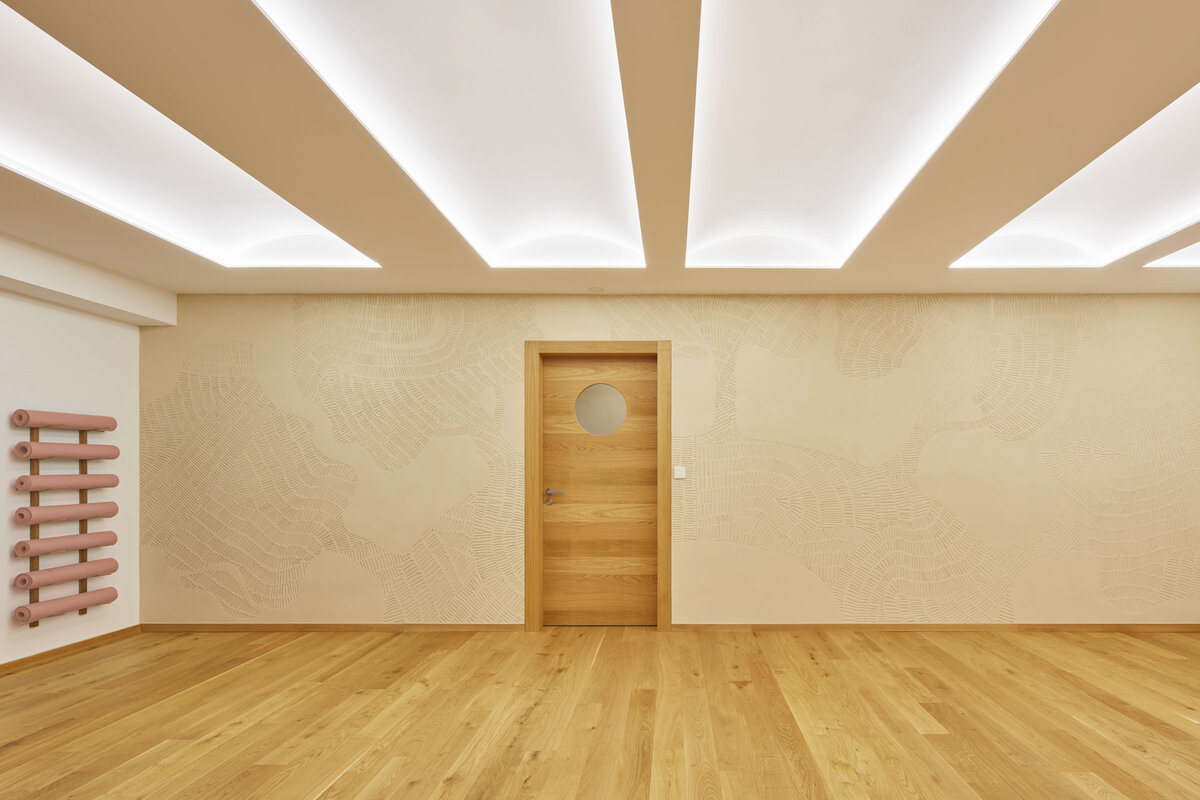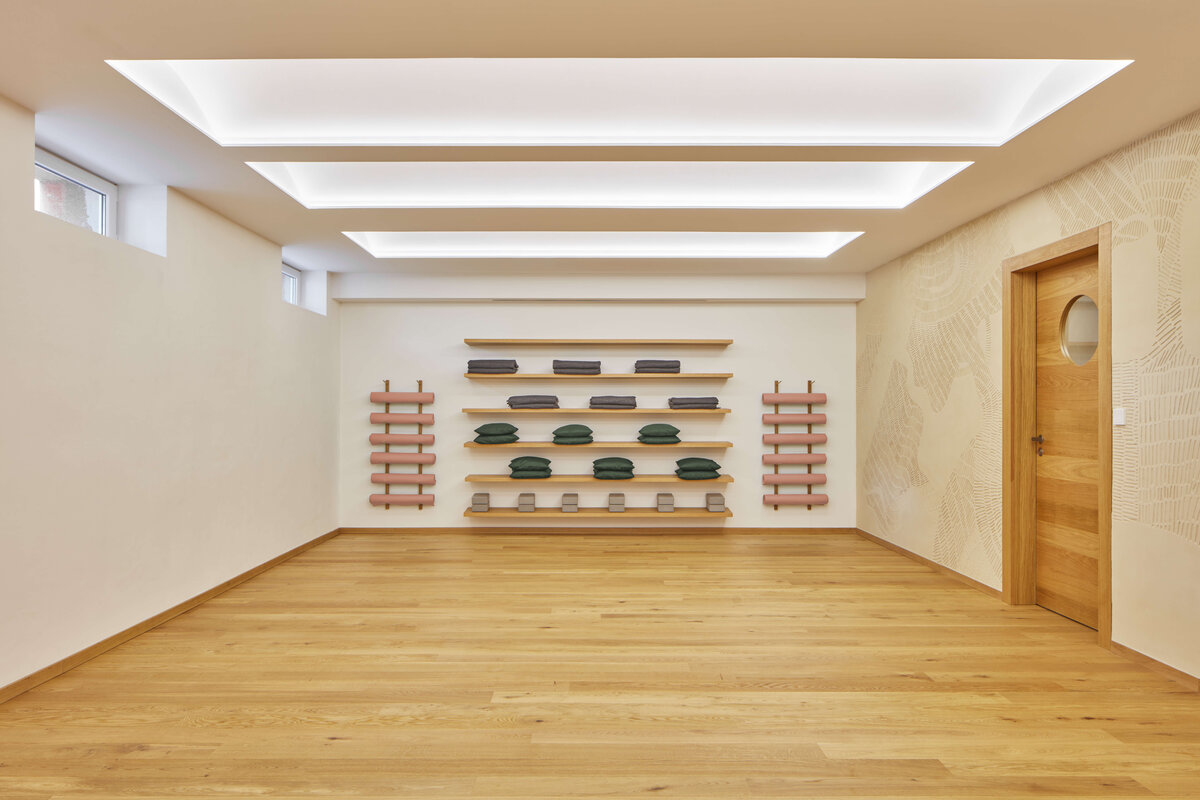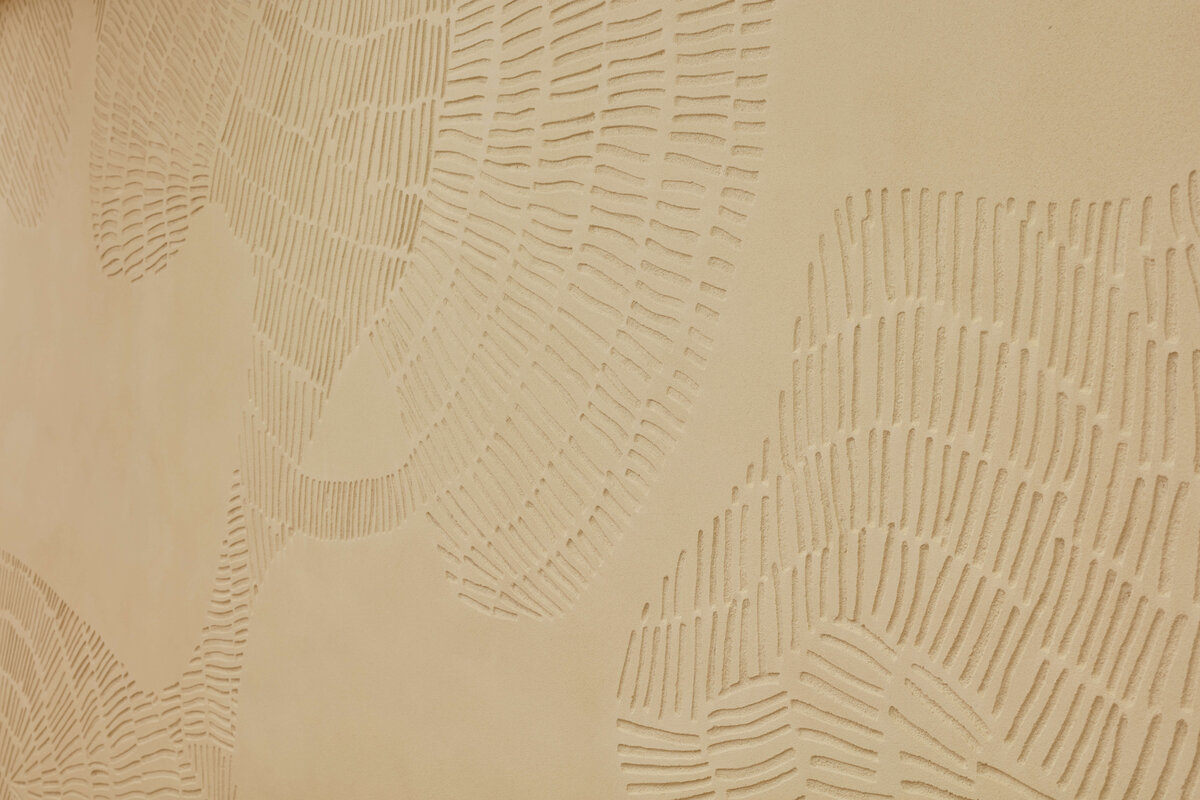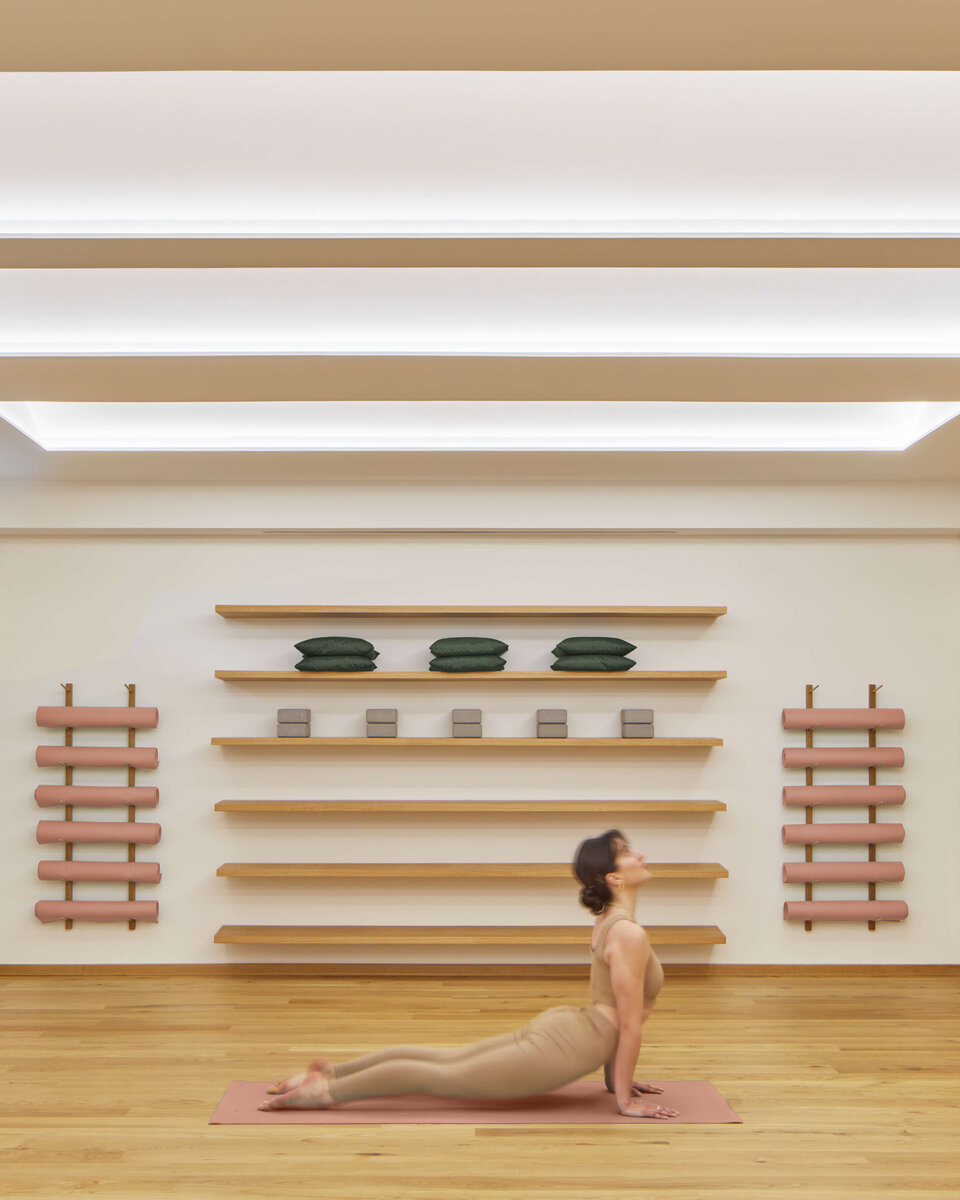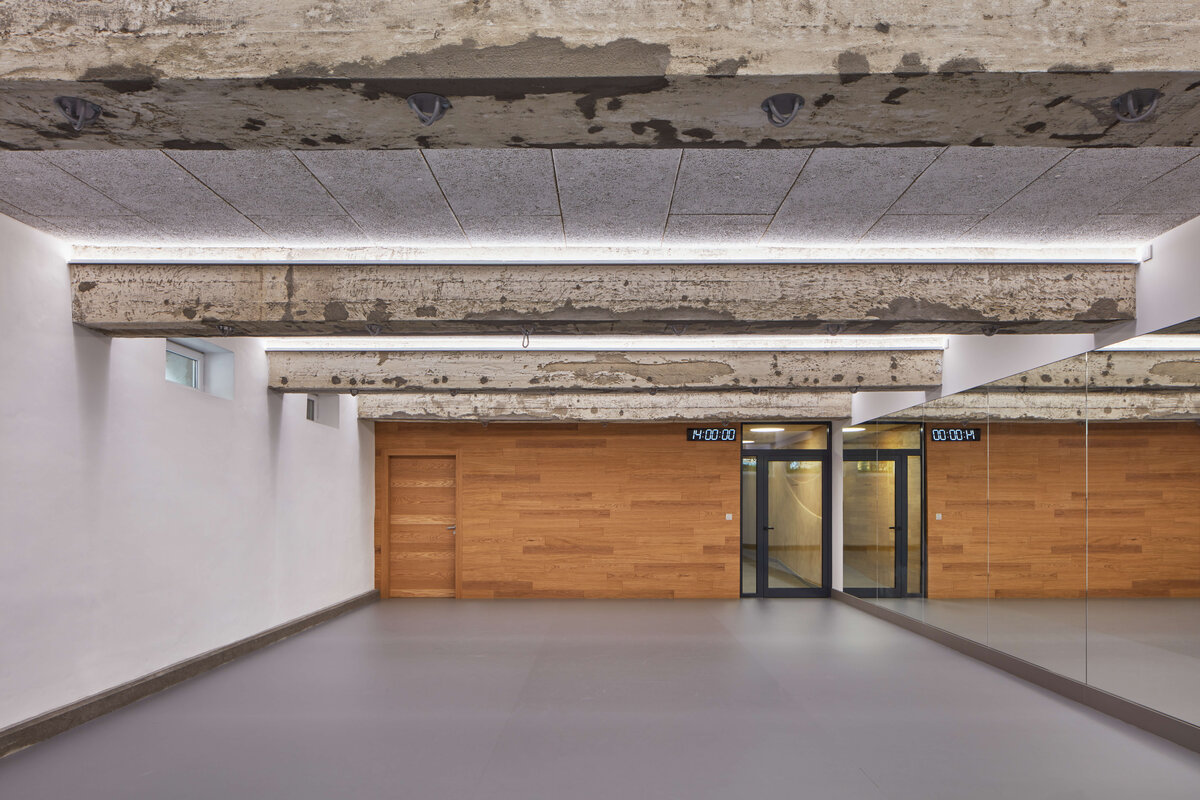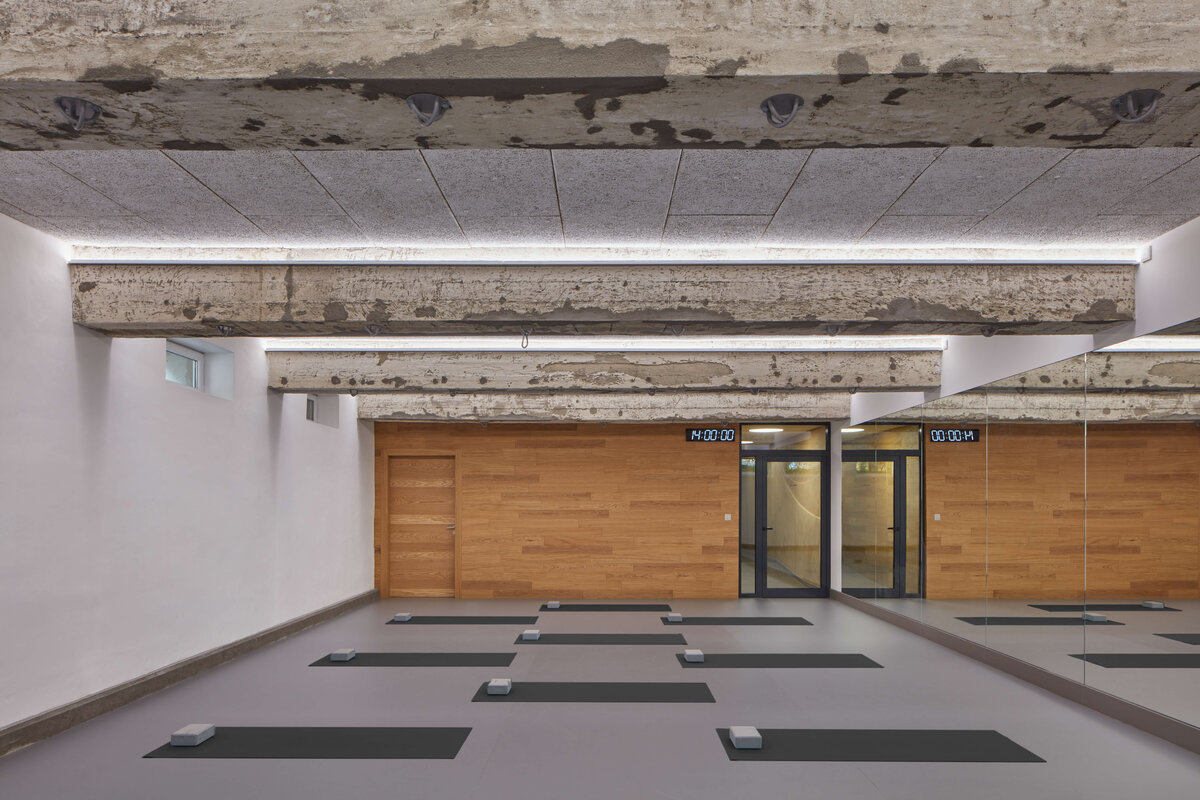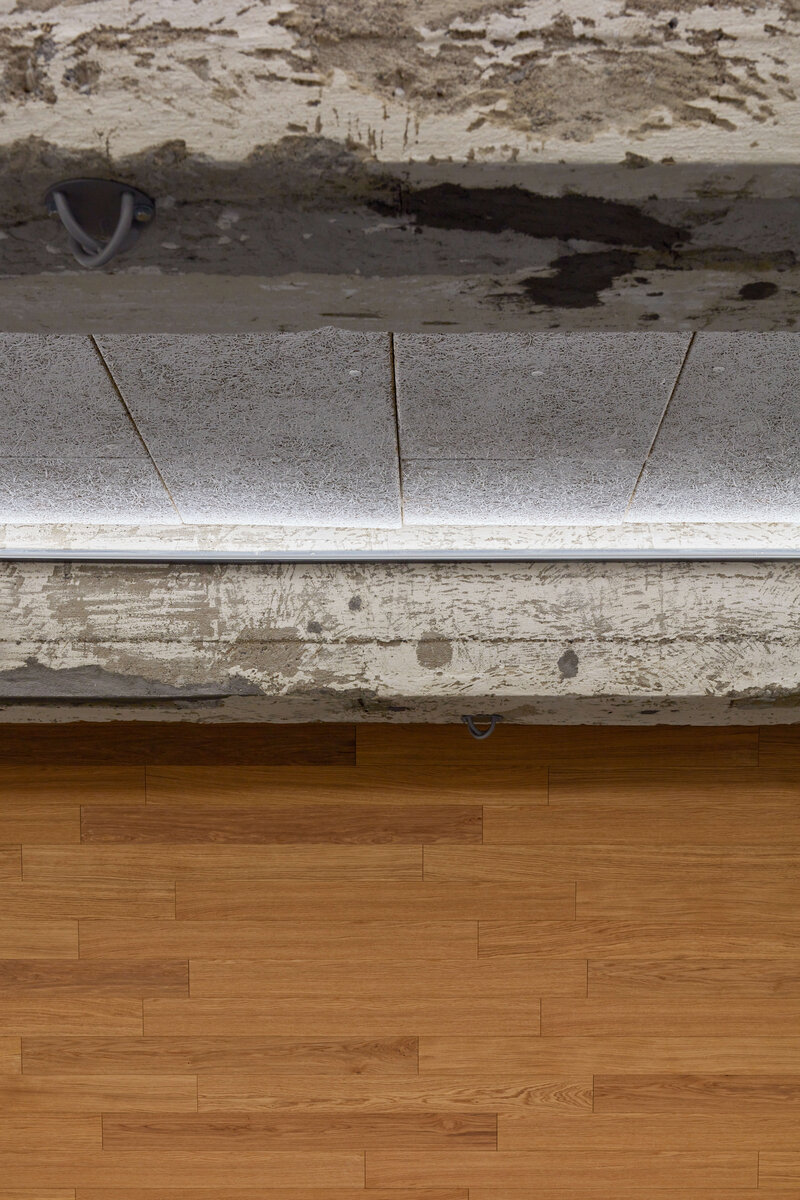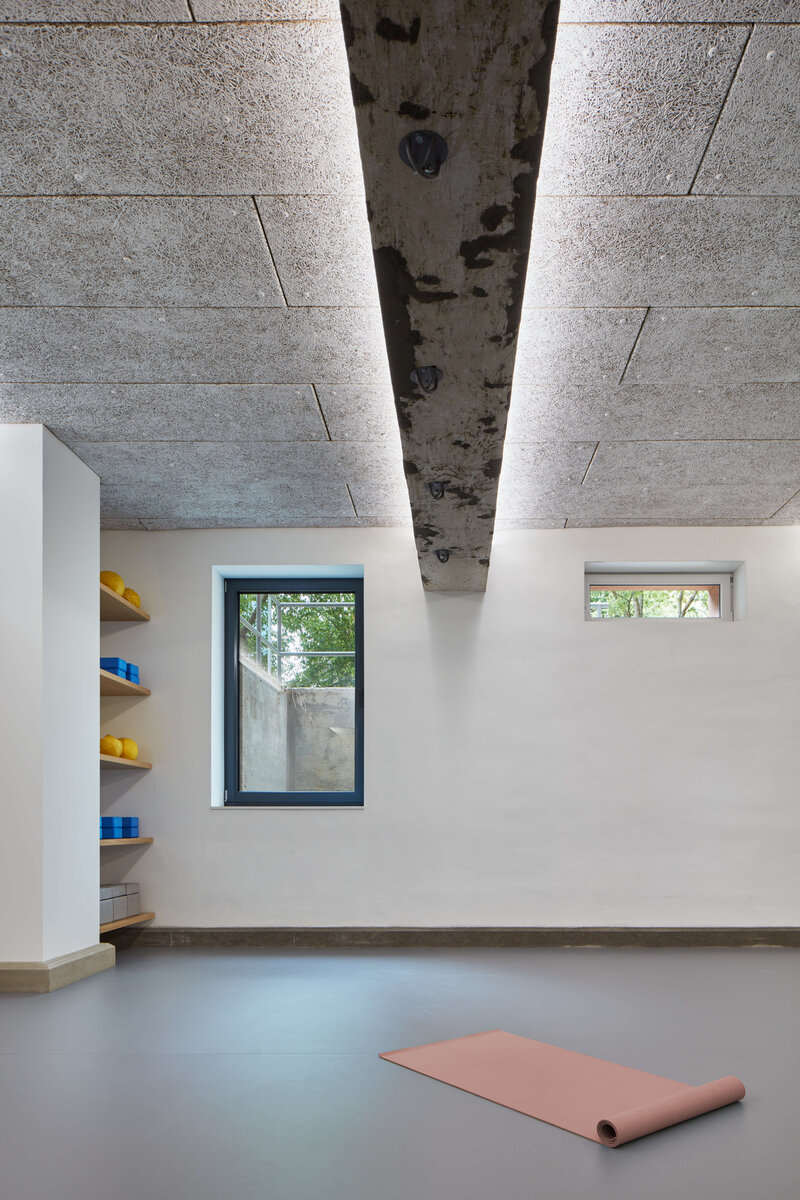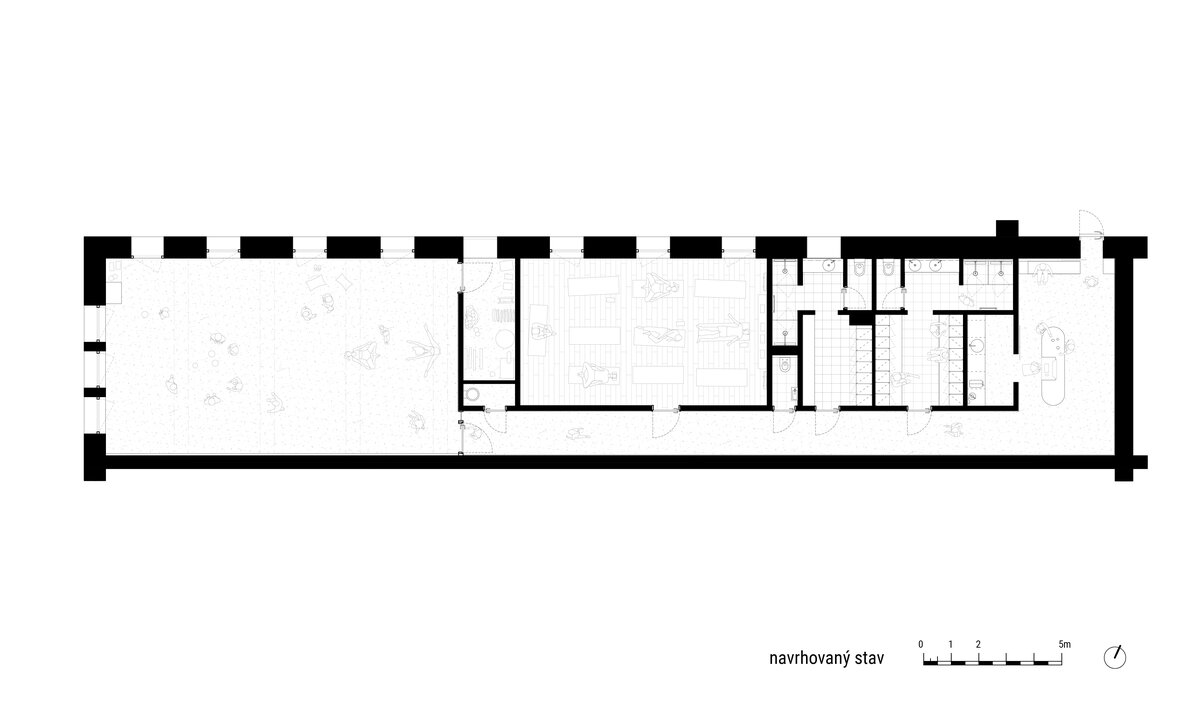| Author |
Pavel Mahdal, Tereza Březovská |
| Studio |
Pavel Mahdal architekt |
| Location |
Petřiny, Praha |
| Investor |
soukromý investor |
| Supplier |
různí subdodavatelé |
| Date of completion / approval of the project |
February 2022 |
| Fotograf |
Radek Úlehla |
The studio is located in one of the buildings of the Petriny housing development, which was built in the 90s and designed by Vlado Milunič. The client's wish was to convert this unused basement into a multifunctional studio for various physical activities. The goal was to transform once a dark and inhospitable space, with the atmosphere of an underground maze into a cozy place for active relaxation.
There are 7 stories of offices and apartments above the basement, but thanks to the frame structure we could afford to demolish all the internal partitions and design a suitable layout for the new use.
As the main idea, we have inserted a volume into the cleared space. This volume distinguished by wooden cladding contains all service rooms and a small yoga studio. Alongside this volume runs the corridor which ends by the big multifunctional gym space.
The studio entrance was intentionally left in its original dimension with a heavy steel door in order to create a transition between the dark corridor and the inner studio space. The small lobby space welcomes the visitor with a warm atmosphere and provides a space to sign in, take off coats, and drink a cup of tea.
Each studio has a different character to suit the variety of activities that will take place there. The smaller hall is designed primarily for yoga and meditation exercises, the larger one is more like a gym space for various dance lessons, trx, body pump lessons, etc. The different atmosphere was achieved by using multiple types of finishes and lighting.
In the small hall, we used calm, warm tones and natural materials, such as wood flooring and clay plaster with scraped ornament. The lack of daylight forces the use of artificial lighting throughout the day. The indirect lighting of the false vaults evokes natural light as much as possible. We cannot see its source, but the soft and warm light spreads throughout the room, which does not dazzle the practitioners in any position. The clay plaster also extends throughout the entrance area and corridor, where abstract waves break the monotony of the linear space.The gym has more like a "rough" atmosphere evoked by exposed reinforced concrete lintels and acoustical ceiling "heraklit" panels. Mirror and simple plaster walls are completed by a wooden cladding which visually connects the big gym with the rest of the spaces.
The spacious changing rooms and facilities are the obvious part of the studio. Mechanical recuperation units are designed for air exchange and cooling and comfortable floor heating runs throughout the whole space.
Green building
Environmental certification
| Type and level of certificate |
-
|
Water management
| Is rainwater used for irrigation? |
|
| Is rainwater used for other purposes, e.g. toilet flushing ? |
|
| Does the building have a green roof / facade ? |
|
| Is reclaimed waste water used, e.g. from showers and sinks ? |
|
The quality of the indoor environment
| Is clean air supply automated ? |
|
| Is comfortable temperature during summer and winter automated? |
|
| Is natural lighting guaranteed in all living areas? |
|
| Is artificial lighting automated? |
|
| Is acoustic comfort, specifically reverberation time, guaranteed? |
|
| Does the layout solution include zoning and ergonomics elements? |
|
Principles of circular economics
| Does the project use recycled materials? |
|
| Does the project use recyclable materials? |
|
| Are materials with a documented Environmental Product Declaration (EPD) promoted in the project? |
|
| Are other sustainability certifications used for materials and elements? |
|
Energy efficiency
| Energy performance class of the building according to the Energy Performance Certificate of the building |
C
|
| Is efficient energy management (measurement and regular analysis of consumption data) considered? |
|
| Are renewable sources of energy used, e.g. solar system, photovoltaics? |
|
Interconnection with surroundings
| Does the project enable the easy use of public transport? |
|
| Does the project support the use of alternative modes of transport, e.g cycling, walking etc. ? |
|
| Is there access to recreational natural areas, e.g. parks, in the immediate vicinity of the building? |
|
